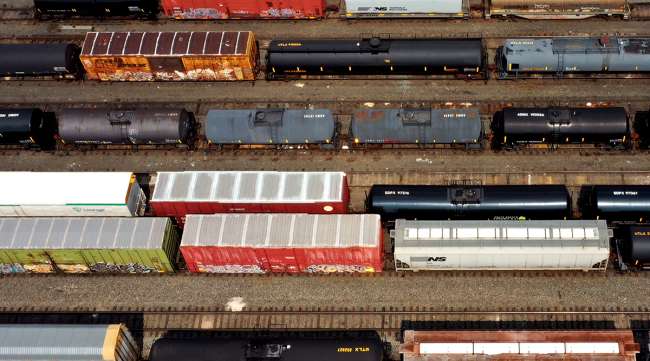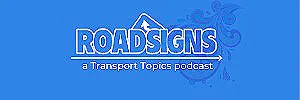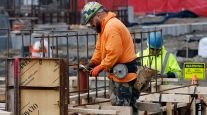Associated Press
GDP Growth in Q1 2023 Revised to 2%

[Stay on top of transportation news: Get TTNews in your inbox.]
WASHINGTON — Showing surprising resilience in the face of higher interest rates, the U.S. economy grew at a 2% annual pace from January through March as consumers spent at the fastest pace in nearly two years.
The June 29 revised figure from the Commerce Department sharply upgraded its assessment of first-quarter growth from its previous estimate of a 1.3% annual rate.
Despite the uptick, the government’s third and final report on January-March economic growth still marked a deceleration from the 2.6% annual rate from October through December and the 3.2% growth from July through September. The economy has been slowed by the Federal Reserve’s aggressive drive to tame inflation through a series of interest rate hikes beginning early last year.
Yet the June 29 report on the nation’s gross domestic product — the total output of goods and services — showed why the economy has so far managed to defy expectations of a coming recession: Consumers continue to spend despite ever-rising borrowing costs. Their spending, which fuels about 70% of the economy, rose at a 4.2% annual rate in the January-March quarter, the most since April-June 2021.
A surge in petroleum and other exports also contributed to the upgraded estimate of growth during the first quarter. The economy managed to expand at a decent pace even though a cutback in business inventories shaved 2.1 percentage points off the quarter’s growth rate.
The Fed has raised its benchmark interest rate 10 times since March 2022 in its attack on inflation, which hit a four-decade high of 9.1% last year but has since slowed to 4%. The central bank’s rate hikes have led to higher costs for mortgages, auto loans, credit cards and business borrowing and widespread predictions that an economic downturn is inevitable.

Guy Broderick of Kriska shares how he successfully combined data reports and a simple understanding of human nature to become one of the best driver coaches in North America. Tune in above or by going to RoadSigns.ttnews.com.
But the economy has proved unexpectedly durable. Retail sales rose in May despite pressure from still-high inflation and rising borrowing costs. Government reports have shown recent gains in new-home sales and orders for long-lasting manufactured goods. And employers have added a healthy average of 314,000 jobs a month so far this year, with the unemployment rate, at 3.7%, still close to a half-century low.
In another sign of the job market’s continuing durability, the Labor Department reported that the number of Americans applying for unemployment benefits fell last week by 26,000 to 239,000.
In the current April-June quarter, the economy is believed to be slowing further but still managing to maintain its growth. Economists surveyed by the data firm FactSet have estimated that annual growth for the quarter will amount to 1%.
“While the economy has outperformed expectations, our base case is that the lagged and cumulative effects of restrictive (interest rates) will slow the pace of activity going forward,” Rubeela Farooqi, chief U.S. economist at High Frequency Economics, said in a research note.
Want more news? Listen to today's daily briefing below or go here for more info:




